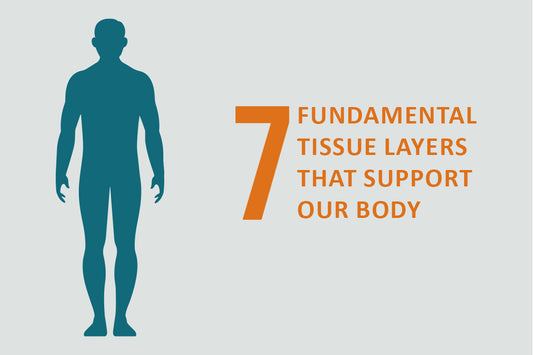Yoga is a practice that has been cherished for centuries, offering a path to physical health, mental health, and spiritual growth. Traditional yoga, practiced on a mat, is well-known for its numerous benefits, from increasing flexibility and strength to reducing stress and enhancing mindfulness. In recent years, a new form of yoga has gained popularity: aerial yoga. This practice involves performing yoga poses while suspended in a hammock, offering a unique twist on the traditional approach. But which is better: aerial yoga or traditional yoga? In this blog, we’ll explore both practices in detail to help you decide which one might be right for you.
Understanding Traditional Yoga
Traditional yoga, also known simply as yoga, involves a series of poses (asanas) and breathing exercises (pranayama) performed on a mat. This practice can range from gentle and restorative to vigorous and challenging, depending on the style and the instructor. Some of the most popular styles include Hatha, Vinyasa, Ashtanga, and Yin yoga.
Benefits of Traditional Yoga
- Flexibility and Strength: Regular practice improves flexibility and strengthens muscles.
- Stress Reduction: The combination of physical activity and mindfulness reduces stress levels.
- Improved Balance: Many poses enhance balance and coordination.
- Mental Clarity: Focused breathing and meditation improve mental clarity and concentration.
- Accessibility: Traditional yoga can be practiced almost anywhere with minimal equipment.
Types of Traditional Yoga
- Hatha Yoga: A gentle introduction to the most basic yoga postures.
- Vinyasa Yoga: A dynamic style where postures flow from one to another in sync with the breath.
- Ashtanga Yoga: A rigorous style that follows a specific sequence of postures.
- Yin Yoga: A slow-paced style with poses held for longer periods to stretch connective tissues.
Understanding Aerial Yoga
Aerial yoga, also known as anti-gravity yoga, involves performing traditional yoga poses, Pilates, and dance moves while suspended in a hammock. This type of yoga requires a special hammock that is securely anchored to the ceiling, allowing practitioners to explore poses in a new way.
Benefits of Aerial Yoga
- Enhanced Flexibility: The hammock allows deeper stretches and greater flexibility.
- Core Strength: Many poses in aerial yoga engage the core muscles intensely.
- Decompression of the Spine: Inverted poses can help decompress the spine, relieving tension.
- Improved Balance: Working with the hammock challenges balance and coordination.
- Fun and Novelty: The unique experience of being suspended adds an element of fun and can be more engaging for some people.
Unique Aspects of Aerial Yoga
- Inversions: Easier to perform and hold inverted poses, beneficial for spinal decompression.
- Support and Assistance: The hammock provides support, making some challenging poses more accessible.
- Full-Body Engagement: The nature of the practice ensures that almost all muscle groups are engaged.
Comparing the Two Practices
Accessibility and Equipment
Traditional yoga requires minimal equipment—a mat and perhaps some props like blocks and straps. It can be practiced almost anywhere, making it highly accessible. Aerial yoga, on the other hand, requires a sturdy, properly installed hammock and enough space to move freely, which might not be feasible for everyone.
Learning Curve
For beginners, traditional yoga might be easier to start with since it doesn’t require the additional skill of balancing in a hammock. Aerial yoga, while exciting, might be intimidating for those who are new to yoga or who have a fear of heights.
Physical Benefits
Both practices offer significant physical benefits, but they do so in different ways. Traditional yoga improves flexibility, strength, and balance through grounded poses. Aerial yoga enhances flexibility and core strength through suspended poses, which can also help with spinal decompression and joint relief.
Mental and Emotional Benefits
Yoga, in all its forms, is excellent for reducing stress and improving mental clarity. Traditional yoga often includes meditation and breathwork, which can enhance mindfulness and relaxation. Aerial yoga, with its novelty and fun factor, can boost mood and provide a sense of adventure, which can be mentally uplifting.
Risk of Injury
Both forms of yoga have a risk of injury if not practiced correctly. Traditional yoga poses, especially more advanced ones, can strain muscles and joints if done improperly. Aerial yoga poses, particularly inversions, carry a risk of falls or strains. It’s crucial to practice under the guidance of a qualified instructor and listen to your body’s limits.
Which Is Better?
The question of which is better—traditional yoga or aerial yoga—depends on individual preferences, goals, and physical abilities. Here are some considerations to help you decide:
Choose Traditional Yoga If:
- You prefer a practice that can be done anywhere with minimal equipment.
- You are looking for a more meditative and grounded practice.
- You are new to yoga and prefer to start with foundational poses.
- You have limitations that make the support of a hammock challenging.
Choose Aerial Yoga If:
- You enjoy trying new and unique forms of exercise.
- You are looking to enhance your flexibility and core strength.
- You want to experience the benefits of inversions with added support.
- You have access to a properly equipped space and a qualified instructor.
Conclusion
Both traditional yoga and aerial yoga offer unique benefits and can be valuable additions to your fitness routine. The best practice for you depends on your personal preferences, fitness goals, and physical condition. Whether you choose the grounded stability of traditional yoga or the adventurous suspension of aerial yoga, you are sure to experience the many physical, mental, and emotional benefits that yoga has to offer.
Ultimately, the key is to find a practice that you enjoy and that suits your lifestyle, ensuring you stay consistent and motivated. So, roll out your mat or climb into your hammock, and start your journey towards better health and well-being today!






